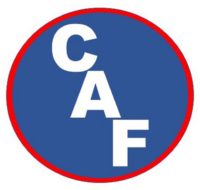What is in the hose? For water operations, there is a solid water stream in the hose. Without a nozzle, a straight stream exits the hose. A fog nozzle is used to shred the solid stream into drops. It will also allow you to adjust the flow pattern.
For CAF operations, the water (W), concentrate (Conc) and air (A) are mixed at the pump, and the hose liner provides the agitation (A). W + Con = Sol + A + A = Foam. Towards the end of the hose, the hose is filled with Compressed Air Foam (Bubbles). A nozzle is not used to make CAF. Despite there being several CAF speciality nozzles on the market, a nozzle is not necessary as CAF (Bubbles) will come right out of the hose. But, since CAF comes out of the hose with three (3) times the back flow energy as water, it is difficult to hold on to an open CAF hose. Therefore, it’s best to add a shut off butt with a pistol grip to hang on and maintain control (safety). A 15/16″ tip is added to help straighten the stream and increase the stream throw.
A nozzle is a tool desgned to do something, i.e. to shred a solid stream into drops. What happens if a fog nozzle is added to a CAF stream? If bubbles flow through the shredding machine, the bubbles pop, separating the majority of the air from the solution, leaving the solution as drops. The fog nozzle basically un-mixed what the CAF system just mixed. The water exits as drops with a decrease in surface-to-mass-ratio (STMR), and is now affected by gravity and can no longer float with the air in the flow path. There is also a corresponding loud roar of air as the separated air escapes the nozzle.

The formed CAF in the hose now exits the nozzle as solution drops, negating the advantage of having a CAF system.
If your department already has a CAF system, “Play With It & See!!” Listen to the loud roar of the escaping air, and notice the shorter stream and the loss of the bubble cloud 60-80 feet out.







































